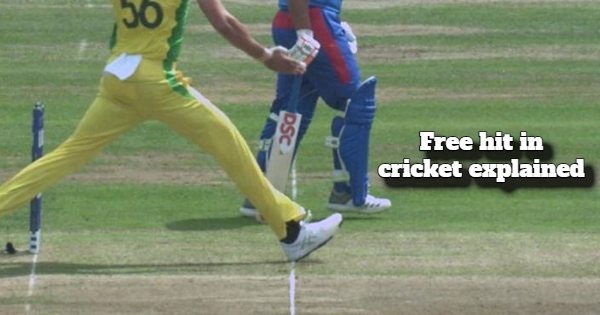Understanding the free hit rule in cricket
Cricket, a sport steeped in tradition, also embraces innovation. One such example is the free hit rule, a provision that offers a strategic advantage to the batting team after the bowling side commits a no-ball. This article delves into the intricacies of the free hit rule, explaining its purpose, application, and the unique benefits it grants to the batsman, including an update on fielding placements during a free hit.
What is a free hit in cricket?
A free hit is a special delivery awarded to the batting team in limited-overs cricket formats like One Day Internationals (ODIs) and Twenty20 (T20) matches. It comes into play immediately after the bowler delivers a no-ball. A no-ball can occur due to various reasons, such as the bowler overstepping the bowling crease, bowling above the batsman’s waist, or having more than the permissible number of fielders outside the 30-yard circle.

The advantages of a free hit
The free hit offers a significant advantage to the batsman. Here’s why:
- Immunity from dismissal (except for a few): Unlike a regular delivery, the batsman cannot be dismissed by conventional methods like bowled, caught behind, LBW (leg before wicket), or stumped during a free hit.
- Opportunity to score runs: The batsman has a higher chance of scoring runs as the bowler is restricted in his approach. He cannot bowl another no-ball (although a wide ball is still possible). This puts pressure on the bowler to deliver a legitimate delivery within the rules.
The exceptions: How a batsman can still be dismissed
While the free hit provides a safety net, there are three ways a batsman can still be dismissed during this delivery:
- Run out: This is the most common form of dismissal during a free hit. If the fielding team manages to run the batsman out by catching the ball and dislodging the bails before he or his partner reaches the crease, the batsman is out.
- Hitting the ball twice: If the batsman deliberately plays the ball a second time (excluding a shot), he is out. This rule prevents batsmen from taking advantage of the free hit by simply blocking the ball.
- Obstructing the field: If the batsman deliberately obstructs the field by hindering the fielder’s attempt to catch the ball, he can be given out.
ALSO SEE: List of top online sports betting websites
Signaling free hit and repeated no balls
The umpire at the bowler’s end signals a free hit by raising one hand and circling it continuously above his head. This signifies to both teams that the next delivery is a free hit. Interestingly, if the bowler bowls another no-ball or a wide ball during the free hit delivery, another free hit is awarded. This continues until a legal delivery is bowled.
Strategic use of free hit, fielding placements
Batsmen can employ different strategies during a free hit depending on the situation. Here are two common approaches:
- Go for big hits: Since the risk of dismissal is low, batsmen often attempt powerful shots to score boundaries or sixes. This can significantly increase the team’s score.
- Rotate the strike: If the batsman facing the free hit is not confident about scoring big, he might simply aim to hit the ball and rotate the strike, allowing his partner, who might be in better form, to face the next delivery.
Fielding rules during a free hit
The free hit rule isn’t just about the batsman’s strategy. It also adds a layer of tactical decision-making for the fielding captain. The fielding side isn’t allowed to change its field placement specifically for the free hit delivery, if the same batsman is on strike. However, it’s important to note that the field placements can be changed if the batter rotated the strike on the no ball delivery.
Free hit for No Ball in Test Cricket…
What you think?
Will definitely help the bowlers (when batting) survive those extended 7/8 and sometimes 9 ball overs we’ve seen happen before…
6 balls is Hard enough for the tailenders facing a top class life threatening fast bowler.
— Dale Steyn (@DaleSteyn62) January 12, 2022
Conclusion
The free hit rule adds an exciting dimension to limited-overs cricket. It rewards the batting team for the bowler’s mistake while also introducing an element of risk for the batsman. Understanding the nuances of the free hit rule, including the fielding captain’s ability to adjust placements, can enhance your appreciation of the game and the strategic decisions made by players on the field.
For more updates on the rules of the game of cricket, ensure you always stay tuned to ReadScoops.com…
Signup to Rajabets and get a 1,000 FREE signup bonus




